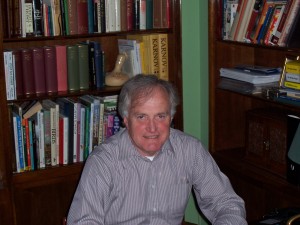Claude Shannon’s acceptance speech “Development of Communication and Computing, and my Hobby”
Author Archives: Sergio Verdu
Bayesian Methods
A nice history can be found in
Fienberg, Stephen E. (2006). “When Did Bayesian Inference Become “Bayesian”?”. Bayesian Analysis 1 (1): 1–40.
James L. Massey (1934-2013)
Claude Shannon Centennial Stamp U. S. Postal Service
Please add your name to the petition list:
http://www.itsoc.org/about/shannons-centenary-us-postal-stamp
Teaching Lossless Data Compression
President Obama bestows 2011 National Medals of Science and Technology
including Claude E. Shannon Award winner Sol Golomb
http://www.whitehouse.gov/photos-and-video/video/2013/02/01/president-obama-honors-countrys-top-innovators-and-scientists-2011
Nevanlinna Prize
Nominations of people born on or after January 1, 1974
for outstanding contributions in Mathematical Aspects of Information Sciences including:
- All mathematical aspects of computer science, including complexity theory, logic of programming languages, analysis of algorithms, cryptography, computer vision, pattern recognition, information processing and modelling of intelligence.
- Scientific computing and numerical analysis. Computational aspects of optimization and control theory. Computer algebra.
Nomination Procedure: http://www.mathunion.org/general/prizes/nevanlinna/details/
The Epijournal: a new publication model
http://www.nature.com/news/mathematicians-aim-to-take-publishers-out-of-publishing-1.12243
Information and Inference (new journal)
The first issue of Information and Inference has just appeared:
http://imaiai.oxfordjournals.org/content/current
It includes the following editorial:
In recent years, a great deal of energy and talent have been devoted to new research problems arising from our era of abundant and varied data/information. These efforts have combined advanced methods drawn from across the spectrum of established academic disciplines: discrete and applied mathematics, computer science, theoretical statistics, physics, engineering, biology and even finance. This new journal is designed to serve as a meeting place for ideas connecting the theory and application of information and inference from across these disciplines.
While the frontiers of research involving information and inference are dynamic, we are currently planning to publish in information theory, statistical inference, network analysis, numerical analysis, learning theory, applied and computational harmonic analysis, probability, combinatorics, signal and image processing, and high-dimensional geometry; we also encourage papers not fitting the above description, but which expose novel problems, innovative data types, surprising connections between disciplines and alternative approaches to inference. This first issue exemplifies this topical diversity of the subject matter, linked by the use of sophisticated mathematical modelling, techniques of analysis, and focus on timely applications.
To enhance the impact of each manuscript, authors are encouraged to provide software to illus- trate their algorithm and where possible replicate the experiments presented in their manuscripts. Manuscripts with accompanying software are marked as “reproducible” and have the software linked on the journal website under supplementary material. It is with pleasure that we welcome the scien- tific community to this new publication venue.
Robert Calderbank David L. Donoho John Shawe-Taylor Jared Tanner
The face of randomness or Poisson for civilians
http://www.empiricalzeal.com/2012/12/21/what-does-randomness-look-like/

